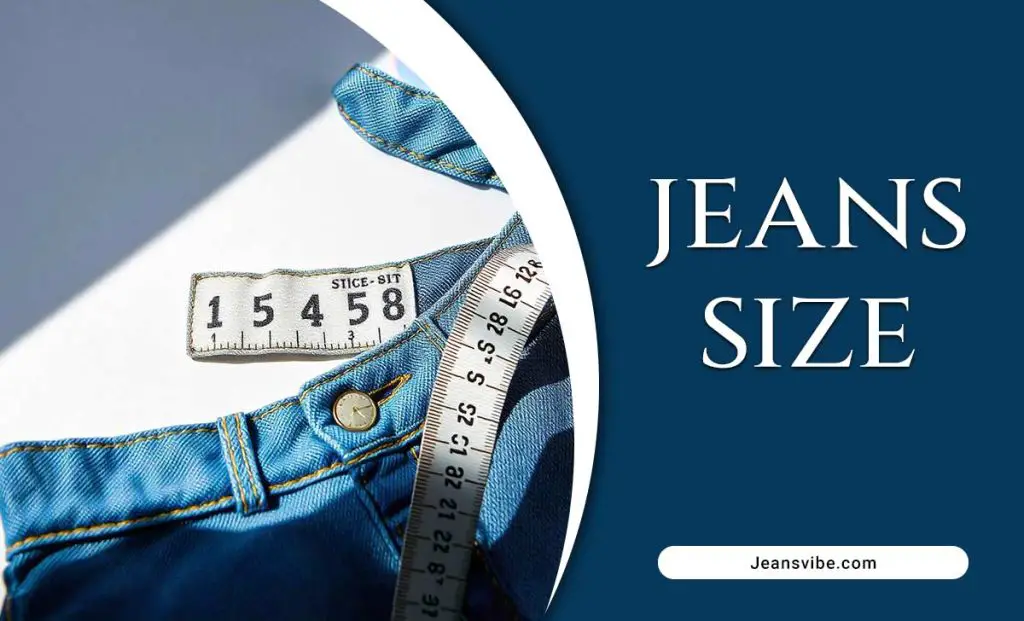Finding the right jeans can be a challenge for anyone. With so many styles, cuts, and brands, it’s easy to feel overwhelmed. However, understanding a jeans size chart can simplify the process and help you find the perfect fit.
This guide will break down how to use a jeans size chart, what measurements to take, and how to choose the best size for your body type. Whether you’re looking for skinny jeans, high-rise styles, or just the best-selling denim options, this article will help you navigate through the numbers and sizes.

Key Takeaways:
- Knowing your waist and inseam measurements is essential to finding the right size.
- Different brands may have slightly different sizing systems, so check their size chart before purchasing.
- Using a measuring tape to measure hips, waistline, and inseam will give you more accurate results.
- Jeans sizing can vary depending on the rise (low, mid, or high) and leg length.
Understanding Jeans Size Chart

A jeans size chart is a tool used to help you determine the best size of jeans for your body type. It takes into account waist, hips, inseam, and rise to create a sizing system that ensures a perfect fit. Here’s how to understand the most important aspects of jeans sizes:
- Waist Measurement: This is usually the first number in a jean size. To measure your waist, use a measuring tape around the narrowest part of your waistline. Make sure the tape is snug but not tight. For more accuracy, measure while standing naturally, without sucking in your stomach.
- Inseam Length: The inseam is the length from your crotch to the bottom of your leg. To measure inseam, stand straight with your feet slightly apart, and measure the length of the inside leg from the crotch seam to the ankle. If you’re shopping for skinny jeans, flared jeans, or other types of denim, inseam length can vary, so check the size chart for each brand’s recommendations.
- Hips Measurement: To measure your hips, wrap the tape around the fullest part of your hips and buttocks. This measurement helps determine if a pair of jeans will comfortably fit around your hips and thighs.
- Rise: Jeans come in various rises, including low-rise, mid-rise, and high-rise. This refers to how high the waistband sits on your body. Low-rise jeans sit below your natural waistline, while high-rise jeans sit above it. The rise impacts how comfortable and flattering the jeans will be on your body shape.
Jeans Size Chart Explained:

Most jeans sizes are measured in inches, but you may also encounter cm measurements, especially for international brands. Jeans sizes typically appear as two numbers: waist and inseam (e.g., 28/30). Here’s a simple way to read a jeans size chart:
| Size | Waist (Inches) | Inseam Regular (Inches) | Inseam Shorter (Inches) | Inseam Longer (Inches) |
|---|---|---|---|---|
| XXS | 21.5″-23.5″ | 27.5″ | 24.8″ | 32.7″ |
| XS | 23.5″-25.5″ | 28″ | 25.2″ | 33.1″ |
| S | 25.5″-27.5″ | 28.3″ | 25.6″ | 33.5″ |
| M | 27.5″-29.5″ | 28.7″ | 26″ | 33.9″ |
| L | 29.5″-31.5″ | 29.1″ | 26.4″ | 34.3″ |
| XL | 31.5″-33.5″ | 29.5″ | 26.8″ | 34.7″ |
Different brands may use slightly different sizing systems, so it’s important to refer to their labels or size guides. The same waist size in one brand might correspond to a smaller or larger size in another. Therefore, always double-check the size chart before making a purchase.
How To Get The Best Fit For Your Body Type
Each body type is unique, and your fit preferences may vary depending on the jeans style you’re looking for. Here are some tips to help you find the right fit based on your body shape:
- Hourglass Shape: Look for jeans with a mid-rise or high-rise that accentuate your waist while fitting comfortably over your hips.
- Apple Shape: Opt for jeans with a higher rise and a looser fit around the hips and legs.
- Pear Shape: Choose skinny jeans or straight-leg jeans with a bit of stretch to balance wider hips.
- Straight Body: You can try different rises, but skinny jeans and flared jeans tend to look good on straight body types.
Remember, measuring your waist, hips, and inseam correctly is key to getting an accurate size.
Conclusion
The key to buying the perfect pair of jeans is understanding jeans size charts and knowing how to measure your body correctly. Whether you’re looking for skinny jeans, flared jeans, or just a pair of classic denim, the right fit starts with the right measurements. Refer to size charts when purchasing from different brands and ensure you know the inseam and waist size that works best for you.
FAQs
1.How Do I Measure My Waist For Jeans?
Wrap a measuring tape around the narrowest part of your waist while standing naturally.
2.What Is The Inseam Of Jeans?
The inseam is the length from your crotch to the bottom of your leg.
3.What Does The Rise Of Jeans Mean?
The rise refers to how high the waistband sits on your body – low, mid, or high.
4.How Do I Know My Jeans Size?
Measure your waist, hips, and inseam and compare them to the size chart.
5.Are Jeans Sizes The Same Across Brands?
No, different brands may have slightly different sizing systems.
6.What If My Waist And Inseam Measurements Don’t Match A Size?
Opt for a size that fits your waist and have the inseam adjusted by a tailor if necessary.
7.How Should Skinny Jeans Fit?
Skinny jeans should fit snugly around the hips, waist, and legs without being too tight.
8.What’s The Difference Between A Regular And A Shorter Inseam?
A regular inseam fits most people, while a shorter inseam is designed for those with shorter legs.
9.What Does “Stretch” Mean In Jeans?
Stretch jeans have added elastane for more flexibility and comfort.
10.Can I Buy Jeans Online Without Trying Them On?
Yes, but make sure to check the size chart and measure accurately before purchasing.










